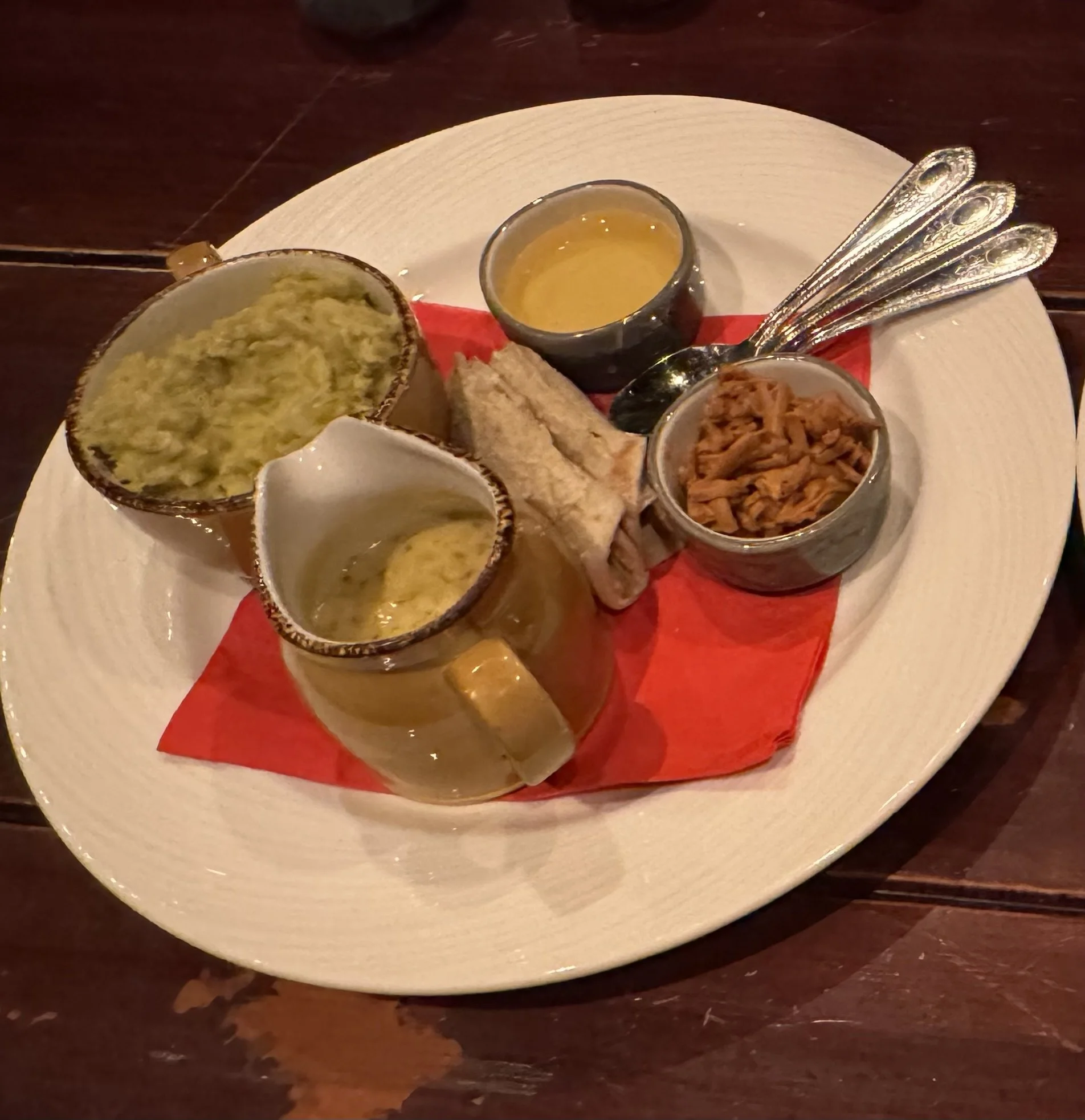Lutefisk: An Interesting Holiday Season Dish
Traditionally eaten at Christmas, Lutefisk is not what I expected
Since moving to Norway just over one year ago there has been one dish I have wanted to try solely because it seemed so out of the ordinary and like nothing I had ever had before, lutefisk. The problem is that it doesn’t regularly show up on menus because it is a traditional Christmas dish. We missed our opportunity to try it last year. The one time we saw it on a menu and felt brave enough to give it a try, the restaurant was out. Apparently it doesn’t last long through the Julebord (Christmas table) season. This year I was determined to get my hands on this elusive dish.
So what is lutefisk you ask? Brace yourselves. Lutefisk is tørrfisk (stockfish) or cod that has been salted and dried on wooden stocks, then soaked in water, then placed in lye for a certain amount of time, then soaked in water again before it is prepared. That is correct, the stockfish is rehydrated and then soaked in lye before consumption.
According to norway.com, lutefisk is the longest standing traditional Norwegian Christmas dish. It seems to be a dish that people either love or hate and the deciding factor is whether one can handle the texture of the fish after cooking or not. The dish is complete with a sampling of sides that will be discussed more a little later.
So where did the idea to soak dried cod in lye come from? The exact history is unknown, but here are some theories. The first known documentation of lutefisk dates back to the 1500s. What we do know is that while Norway has an extensive coastline, not all inhabitants live near the sea, so people had to find ways to preserve their cod for transport to their homes before they could prepare and eat it. Fish is a staple in the Norwegian diet especially around the holidays when only fish could be consumed during the Lenten season. While there were several options for preservation, many people in Norway chose lye.
The origin for when or why lye was used is not really known. Some theories involve stock houses catching fire and the fish getting coated in the ashes. Because food was a precious commodity and not to be wasted, the ash coated fish were cleaned well and then eaten. The most logical theory is that one impatient person tested out using lye to reconstitute the dried stockfish to speed up the process and ended up with lutefisk in the end. No matter where the process came from, a lutefisk dinner has become a staple tradition throughout Norway during the Christmas season.
The timing of the soaks varies based on the producer; however, there is a common range of time. First the dried tørrfisk, or stockfish, is soaked in plain water for five or six days, then it is soaked in the lye for about two days, and finally, it’s soaked in fresh cold water for another four to ten days. This ensures full rehydration and the lye gives the fish its unconventional jelly-like texture.
Where traditions vary is in how the lutefisk is served; the accompaniments and sides differ by region. For example, in the fjord region of Norway, it is more common to see mushy peas, boiled potatoes, and bacon cubes served with the lutefisk dinner, while in the Trøndelag region (where we live), it is commonly served with syrup and brunost (brown cheese). It is important to try all the variations and find the preparation and accompaniments you love.
My parents are in town visiting now, so over the weekend we made a reservation at Fjøset, a restaurant at Hovde Gård, the local bed and breakfast in our town, for a traditional julebord (Christmas table) dinner. We learned our lesson last year when we were unable to partake in the julebord tradition and booked a reservation early. While there are many traditional dishes served at Christmas throughout Norway, I was most interested in getting my hands on a lutefisk dinner this year and Fjøset delivered.
As mentioned above, lutefisk is a love it or hate it dish, so we ordered one meal for the entire table to share. I was surprised to find we all loved it! The texture of the rehydrated cod is slightly different than normal, taking on a more jelly-like consistency, but ours was still firm and quite pleasant. Fjøset served its lutefisk dinner with mushy peas, boiled potatoes, bacon cubes, a mustard sauce similar to a thick vinaigrette, honey, and shaved brunost (brown cheese). Of course, we taste tested all of the options. The mushy peas and boiled potatoes were eaten as side dishes, but the bacon, mustard sauce, honey, and brown cheese were used as fish toppings. My least favorite topping was the mustard sauce. The bacon was an ok option, but my favorite was a combination of the honey/syrup and brown cheese shavings. I did not expect this preference from my tastebuds, but they liked what they liked. I can’t say I want lutefisk as my usual cod meal, but I understand the appeal and desire to have it once per year during the holidays. Even our 2-year-old son, and my mom who is known to reject fish, enjoyed the lutefisk meal. I highly recommend giving it a try if you find yourself in Norway during the julebord season.
As luck would have it, our small community hosted a Friendsgiving meal for us the next day and lutefisk was part of the buffet options. I enjoyed their rendition of the meal as well and still found the honey/syrup and brown cheese toppings to be my favorite.



